Mark Sisson's Blog, page 220
June 3, 2016
Primal Power Couple Loses Over 300 Pounds
It’s Friday, everyone! And that means another Primal Blueprint Real Life Story from a Mark’s Daily Apple reader. If you have your own success story and would like to share it with me and the Mark’s Daily Apple community please contact me here. I’ll continue to publish these each Friday as long as they keep coming in. Thank you for reading!
 My husband Tim and I met while I was in college, and we quickly fell in love. After seven months, we decided to get married, and two weeks later, we did! We celebrated our eighth wedding anniversary in April.
My husband Tim and I met while I was in college, and we quickly fell in love. After seven months, we decided to get married, and two weeks later, we did! We celebrated our eighth wedding anniversary in April.
Growing up, both of us were larger than our peers. We both have always struggled with our weight and our relationship with food. When we got married, it didn’t get any better. We knew how to cook—frozen pizza, mac and cheese from a box, and spaghetti. So that, plus lots of fast food and tons of Mountain Dew, is what we ate. Our weight continued to climb as we started our lives together. At our heaviest, Tim weighed 380 and I weighed 315.
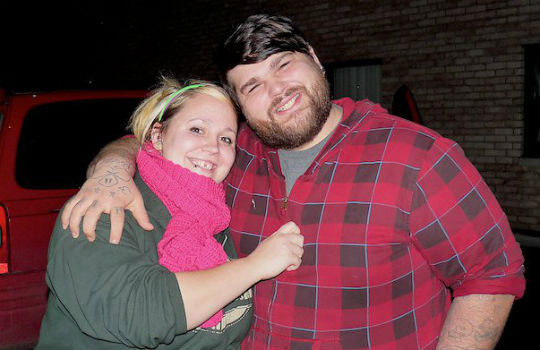
We went on a vacation with a group of friends and took tons of pictures. It wasn’t until a few months after the trip that I got to see the photos. I was completely devastated at how I looked. So becoming discouraged with my ever growing waist line, I started doing what conventional wisdom told me to do—I cut out the fat from my foods and started counting my calories.
I did lose weight. About 30 lbs. And I was miserable. I felt hungry all of the time, even though I’d eaten my daily allotted calories. I felt really sluggish and got sick easily (I had a respiratory infection for an entire summer!). And after 30 lbs, I couldn’t seem to lose any more no matter how hard I tried.
One week Tim had to go out of town for work and I thought that might be a good time to try something new. I told him I was going to just try not to eat anything that “came out of a box” and just focus on veggies, meat, and fruit.
Daily we’d talk while he was gone, and he couldn’t believe the experience I was describing. I was already experiencing positive results—falling asleep faster, waking up easier, sleeping more soundly, my acne had started to clear up, my 3 PM brain fog started to lift, and the list went on.
When he returned, I stepped onto the scale. I had lost 12 lbs! How was that possible, when I didn’t count calories or go hungry any day?!
So Tim agreed to try it for a week to see what his results might be. He experienced the same positives, and he lost 15 lbs. In a week! And eating until full every meal!
I’ve always been told that you need to eat lots of grains, and so I went online to make sure it was okay for us to be eating this way. And that’s when I found Mark’s Daily Apple and learned that in fact, this thing we were doing was really a thing, and it was called the Paleo Diet. From there we found all of the big names in the Primal/Paleo community.
I researched and researched. I found recipes, studies, blogs, articles—everything I needed to feel confident that it was okay to eat the way we were eating. Not just okay, but ideal!
So we decided to try it for another two weeks. And then a month. And then three months.
And then we took all of the boxed foods out of our cabinets. And then we stopped drinking soda and eating fast food completely. And then we found farmer’s markets.
And then we did our first Whole30. And then…we adopted the Primal/Paleo lifestyle as a full way of life.
Which brings us to four years later in our journey…
My husband found a huge passion for cooking and nutrition because of our new relationship with food. He decided to intern at a local restaurant in his free time, which sparked his love of food even more. He’s currently taking the Primal Health Coach course with hopes to further his knowledge of nutrition to see where this takes him.
I’ve always been interested in fitness, but it always seemed harder for me than everyone else. As the weight continued to come off, my ability to fully do the exercises I wanted to do—like yoga and running—increased. Eventually, I felt confident enough to move beyond my 24/7 gym into a more structured environment, and we joined a CrossFit gym. My passion for fitness continues to rise as my relationship with my body improves.
Because of my new love of fitness, I subjected us to many, many walks around the neighborhood (Mark says they’re good for you). Which then became hikes at local state parks. Eventually this love of walks and the outdoors turned into something completely different. We found a huge love and passion for backpacking and hiking! We have developed a hobby together we never would have found if it hadn’t been for finding this lifestyle.
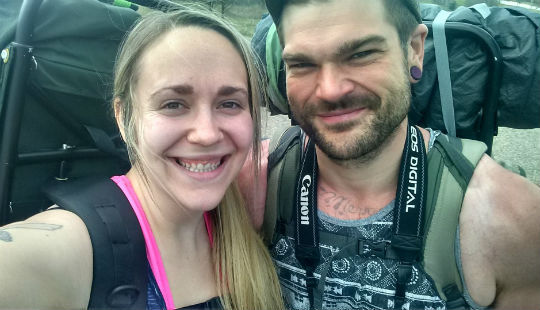
A fun part of our backpacking trips is figuring out how to still eat primal while we’re on the go, in a place with no refrigeration, limited supplies, and only a fire to cook on. So far, we’ve been able to maintain our Paleo lifestyle (with the occasional inclusion of rice) even in the most primal of settings. We also really enjoy unplugging from the world completely when we’re on the trail. There is something magical and real that happens when you can’t access your phone for an entire week (or even weekend).
As we fine tune what we eat and how we move our bodies, we are enjoying experimenting to see how certain things make us feel. For instance, intermittent fasting (which you can read about on Mark’s site) is something that we’ve tried and absolutely love the way it makes us feel. We recently made Mark’s Warm Coconut and Pancetta Kale—we loved it! We’ve both become open to trying new things, new ideas, and new ways of thinking. And when it comes to food, Tim’s motto is, “You don’t dislike that vegetable. You just haven’t had it cooked the way you like it yet.”
The past five years have been a crazy journey. As our relationships with ourselves have improved, we found that we’ve become closer to one another than we ever thought possible.
We are now in the midst of doing a Whole100 and are loving how our bodies are feeling. To date, Tim has lost 160 lbs and I have lost 125 lbs! We both still have more to lose, but somewhere along the way, that stopped being our focus. The way we feel about ourselves and one another, the way we spend our free time, and the way we use food as a tool and not as a crutch has become an important part of our lives.
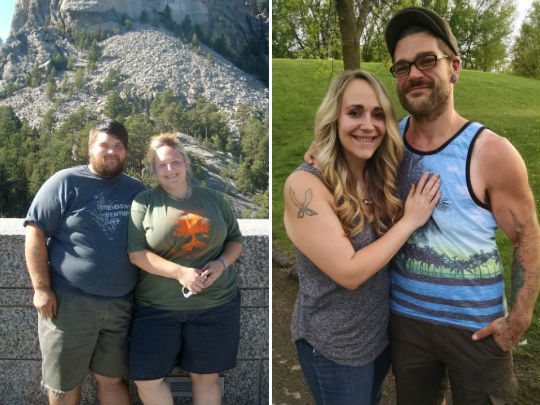
I can’t imagine the life we’d be living without this lifestyle. We both feel like we’re the best versions of ourselves. When we’re on the trail and come to the top of a peak, we often stop for a moment to enjoy our surroundings. At the top of that peak I always think, “We’re living the life I always dreamed we would live.”
Samantha and Tim




June 2, 2016
17 Activities for Primal Family Bonding
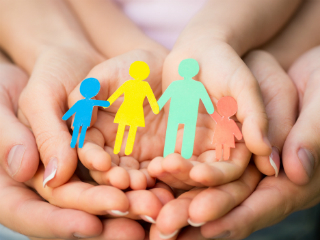 How do you want to look back at this vacation season with your kids or extended family? What will you do to make it a memorable bonding experience? Family time these days, as many of us recognize, has quickly morphed into several people inhabiting the same physical space while each individual gets lost in their own personal screen. One communication expert likened this new technological isolation to the “parallel play” that occurs between toddlers (a kind of interaction we probably shouldn’t model if we want strong non-toddler relationships). The takeaway is that our attention spans have regressed as a result of our technology, and so, perhaps, has our intimacy. So what are some Primal ways you can reconnect and strengthen the bonds within your family (while having fun in the process)?
How do you want to look back at this vacation season with your kids or extended family? What will you do to make it a memorable bonding experience? Family time these days, as many of us recognize, has quickly morphed into several people inhabiting the same physical space while each individual gets lost in their own personal screen. One communication expert likened this new technological isolation to the “parallel play” that occurs between toddlers (a kind of interaction we probably shouldn’t model if we want strong non-toddler relationships). The takeaway is that our attention spans have regressed as a result of our technology, and so, perhaps, has our intimacy. So what are some Primal ways you can reconnect and strengthen the bonds within your family (while having fun in the process)?
While some people suggest getting involved in other’s electronic interests as a possible option— like playing video games with our kids or watching movies as a family—I’m going to take up the cause today of putting the electronics down altogether.
There’s nothing wrong with modern advances or some tablet time at home. After all, technology can help keep families in communication across great distances (like when mom or dad has to travel for work or the grandparents live across the country). But while it’s great for keeping in touch over distance, it can put up walls when we’re in the same room. Most of us are looking for more in our relationships. We want better for our kids and our partnerships.
Many of us eat Primal. We move according to Primal principles. So what are some Primal-friendly ways to bond as a family?
And let’s not limit ourselves to the modern nuclear family unit here. Our ancestral example sure wasn’t based on couples with 2.2 children. Large communal rituals and connection were greater organizing principles than family unit activities. So in that spirit, let’s bring in every member of the family—youngest to oldest—as well as the friends we’ve chosen to be part of our larger tribe.
So for those looking to bond with family and friends, here are a few Primal possibilities.
1. Commit to a weekly outdoor adventure
As a group, do something new each week or at least each month this summer. Try something you’ve never done, or give yourself the chance to recreate your favorite summer activities or trips. Retrace the steps of a backpacking trip you did 25 years ago, or try rafting. Not every choice needs to be an expensive or elaborate deal. Take the kids zip-lining, head to a water park, or do a summer luge run on an Alpine slide.
2. Take advantage of the night
There’s something about the dark that’s more fun and mysterious than daytime. Kids especially relish the subversive feeling of staying up long past daylight hours. A day hike turns into something totally different at night. Stories, games or singing/music making by the campfire will feel more intimate. Even lying on the grass, studying the stars, and watching the clouds move across the dark sky together will be a more memorable occasion.
3. Head out for a day of foraging
If you’re new to foraging, look for a local Meetup or naturalist organization devoted to foraging. Alternatively, visit an area farm that offers berry picking. Even a trip to the local farmer’s market can offer a different experience for every member of the family accustomed to grocery store fare. Foraging is a great chance to teach the kids what’s edible (and not) and how people used to feed themselves back in Grok’s day. It’s also great for infusing some added diversity to your Primal menu.
4. Go spelunking
Nothing says Primal like a cave. Spelunking is one of those adventures even the younger ones can manage (depending on the terrain), and they might be the most excited in the bunch. There’s something about those dark cave corridors that fuel the imagination with just the right mix of curiosity and apprehension. While the thrill of it is enough for most people, there’s plenty of scientific and aesthetic enjoyment to be had as well.
Load up with the right gear, be sure to go in a group, and make sure the caves you visit are approved for recreation. Some are home to poisonous gases, which can kill. For more information on staying safe and finding a cave near you, check out the National Speleological Society.
5. Enjoy mud, rocks and sand
Remember the days when these were the toys of choice? Let’s not kid ourselves. We all need these. Forget the perfect summer. Go for the dirtiest, messiest few months you can, and be sure it’s not just the truck that needs washing at the end of the day.
Get the kids back in the dirt and sand whenever you can, and join them. Look for sea glass on a rock beach, or make a miniature stone fort in the woods. Skip rocks at the lake, or make a sand castle. Create mud pies (or have a mud fight) with the cousins. Grok would approve.
6. Check off every park on the map
Depending on your ambition, find either a state, regional or even local map, and hit up every park, playground and nature preserve you find. Let it spur everyone’s competitive side. Bring a token back from each for fun. Be sure to save the map in your family memory box.
7. Study nature together
Let kids know the most important things to learn aren’t on the Interwebs. Choose a summer theme to “study” like birds or trees, and make it a family affair. Grab some binoculars and/or cameras, and add a scrapbook, sketchbook or nature journal that everyone contributes to. Leave time for plenty of first-hand study, and visit natural museums and nature centers for some screen-free education.
8. Spend time in natural bodies of water
This isn’t to discount the pool, but swimming (or other recreational activities) in natural bodies of water offer a totally different experience. Check out area beaches, lakes, rivers, and favorite swimming holes. For other options, consider surfing, paddle boarding, kayaking, canoeing, and creek stomping. For the tiniest ones, even puddle stomping after a good rain is an awesome time.
9. Take up a family service project
Get in the Primal communal spirit, and do some good. You can often find community organizations or houses of worship that organize house painting, yard tending or other repair work. Additionally, groups like Habitat for Humanity build homes. Local chapters of ecological organizations or park and rec services often advertise for help with trail clearing.
10. Have a power outage party
Grab the kids or a whole brood of friends for a massive, late night (or overnight) power outage party. Munchies and games are welcome. Electricity, however, is off limits. Candles, backyard torches, and bonfires offer better ambiance anytime.
11. Start a family garden
While it may not be as literally hunter-gather-minded as foraging, it gets you in the dirt and in touch with what you eat. It’s a great project that everyone in the family (or neighborhood if you’d prefer to go that route) can contribute to. If you don’t have access to a plot (or don’t want to take on too much), consider some potted tomatoes and herbs.
12. Organize a track and field day
The bigger the crowd, the more fun you’ll have with this option. Consider an extended family or neighborhood event. Set up a large yard or field for sprints and relays as well as jumping and throwing events. Have the kids prepare by making homemade spears to throw and collecting coconuts for an easier “shot put” event. Throw in a Primal picnic to feed all the hungry athletes. Include some Ultimate Frisbee too, while you’re at it.
13. Grab the camping gear
Even if it’s just setting up the tents in the backyard or taking the pop-up camper to a campground with the cousins or friends, everyone will enjoy the break. As you’re willing and the kids are ready, take on bigger trips like camping in more remote spots and add activities like backpacking or canoeing to your destination.
14. Learn a new outdoor skill
Learn anything from rock climbing to kayaking, geode hunting to fishing, archery to matchless campfire building.
15. Build Something
Think of Grok’s clan building their shelters and gear, and take up the same spirit. Maybe it’s putting up a new garage with your brothers, working with your spouse to build the kids that tree house they’ve always wanted, teaching your kids how to build some simple furniture items, making walking sticks, or even setting up raised gardens or an agility/exercise course in the backyard with ropes and natural barriers.
16. Establish a screen-free sabbath
They say necessity is the mother of invention, and I’d add imagination to that. Make the kids put aside their screens for a day (with parents following suit), and see what becomes possible once the grumbling and disorientation wear off.
17. Make a communal summer bucket list
On that note, gather the clan to plan how you’ll fill your time. What kind of summer do you all want anyway? There’s no reason to go overboard and schedule every minute, but you’ll likely get more out of the season if you bring a little intentionality to it. For those with kids or especially busy schedules, it helps to lay out a vision and make a plan because these months go fast.
What are your priorities this summer? Slow living? Adventures? Trying new experiences?
Give everyone a chance to add their interests. Better yet, make a family vision board with pictures, ideas, maps, and lists of what everyone in the family wants to try. All that’s left is to make it happen—and to enjoy a great Primal summer together.
Thanks for reading, everyone. What are your priorities this season? What activities will you share with loved ones? Thanks for reading, and have a good end to your week.
Like This Blog Post? Subscribe to the Mark's Daily Apple Newsletter and Get 10 eBooks and More Delivered to Your Inbox for FREE



June 1, 2016
Why You Still Probably Need More Rest (and 23 Ways to Get It)
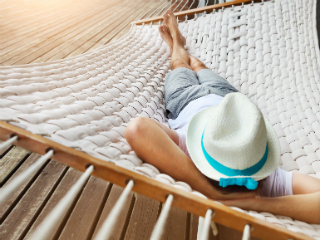 We’re entering the lazy days of summer here, but I wonder how many people feel an increase in stress and obligations. Every year I feel like the leisure time of summer erodes at a more rapid pace. Whatever happened to summer as a time for R&R (especially for kids)? Of all our personal limited resources, I often wonder why rest gets such short shrift. Although our hunter-gatherer ancestors worked only about 12-20 hours a week, leaving virtually the whole day to rest, socialize and play, such is not the case for most of us today. We’re supposed to be busy (even on vacation). To sit in quiet or risk boredom isn’t the way of the world these days. So I’m going to venture that too many of us have forgotten what being rested actually feels like. In light of that, I thought I’d offer up a few suggestions to remedy the situation.
We’re entering the lazy days of summer here, but I wonder how many people feel an increase in stress and obligations. Every year I feel like the leisure time of summer erodes at a more rapid pace. Whatever happened to summer as a time for R&R (especially for kids)? Of all our personal limited resources, I often wonder why rest gets such short shrift. Although our hunter-gatherer ancestors worked only about 12-20 hours a week, leaving virtually the whole day to rest, socialize and play, such is not the case for most of us today. We’re supposed to be busy (even on vacation). To sit in quiet or risk boredom isn’t the way of the world these days. So I’m going to venture that too many of us have forgotten what being rested actually feels like. In light of that, I thought I’d offer up a few suggestions to remedy the situation.
First, I see three primary factors at work that contribute to the chronic lack of rest we see today.
For some folks, there’s the Puritanical “no rest for the wicked” mentality that encourages compulsive business. I’ve known a lot of people in this category throughout my life. None of them were happy—or rested.
On the other hand, there’s the rise in “pseudo” restful activities. Let’s get honest here. What have you been substituting for real rest? I’m talking about those largely mindless activities that suck up every spare minute of your time. For instance, how much time do you spend on your phone? Your laptop? Watching T.V.? (Let’s face it, screens are our easiest diversion.) Living well and restfully isn’t about outlawing screen time, but getting a realistic handle on how much of our lives we give to them.
Finally, there are those who are chronically busy not really by their own choosing. Parents of very young children likely know what I’m talking about here. I knew a single dad who was sick as a dog and decided to grant himself the opportunity to rest in his bedroom for an hour while letting his three young sons enjoy a Disney movie. He came back to find one or more of them had taken a marker to the TV and a couple laptop screens. Still, even here we should feel moved to make changes that offer us even just small windows of rest. Parenthood and life are marathons, not sprints. It’s imperative to find a way to get what we truly need.
“But, seriously,” you might say. “Why does it matter anyway? If I get enough good sleep at night, why should I even need rest?” The truth is, lack of rest sabotages the best of our Primal efforts. When we shortchange rest, we risk not allowing ourselves optimal recovery from intensive exercise. Even with adequate sleep, compounded stress throughout the day and week is enough to throw off our hormonal systems, which can lead to cravings for more food than we need (or non-Primal choices). We risk the ravages of increased oxidation and the propensity for high cortisol levels, which can potentially stall our transition to (or consistent maintenance of) fat burning.
The long and short of it is that everybody needs ample rest. I’m going to call bull on the hyped up claim from some people who like to boast about their ability to go with little sleep and no breaks. These people may claim they’re the pinnacle of human productivity, but would you really ever want to be one of them?
I’m in this game of life not for breakneck speed and all-or-nothing “success” as some people define it. I want the good life, the Grok life as much as I can emulate that in the context of today’s obligations and benefits. I want a sane life and a healthy existence. I want balance, and that means rest.
I’ve always said doing the Primal Blueprint is one part understanding and following the principles and one part adapting them for your individual needs and preferences. Do you know how much rest is ideal for you? When was the last time you were in tune with that?
Not everybody feels relaxed by quite the same things after all, and I think this is exactly the kind of question where personal idiosyncrasies make or break an intention, let alone outcome. The fact is, self-attunement comes with time and practice, but it will always be the most effective means for choosing and dedicating yourself to the best rest possible.
In that spirit, I’d suggest making a simple list (because I’ve met very few people who already have one) of ways you can rest—your preferred times, places, and conditions for rest. If activities or people are part of this picture for you, include them. Make the list as long as you can. You’re not settling on a favorite here; you’re visualizing options—a plethora of choices you can work with on any given day to incorporate the most (and most meaningful) rest into your schedule.
You can also consult these choices to see what feels like a good fit.
1. Go to bed regardless of your to-do list
Life will always give you more than you’ll ever be able to do. It’s imperative to develop enough discipline to draw a line in the sand for your own well-being. Has everyone been fed? Is everyone safe—not vomiting or bleeding? Are the oven and stove burners off? If yes, go to bed. More times than not, the rest can wait.
2. Earth yourself
The science might seem complicated, but the feeling isn’t. Make time every day to put your feet in the grass or sand or dirt. Even better, lie down and let your whole body feel connected to its Primal roots through an earthing-style reset.
3. Meditate
It’s not just for those who sit on a cushion for hours (although that can work, too). The idea is to get space between you and your thoughts and come back to center. The benefits to brain and body are impressive, but you’ll experience the difference that first day. Life feels much more restful when we understand we’re not the crazed conversation going in our heads.
4. Use sound to reset
Sound has a measured effect on several markers of health, and we show a definite response when exposed to certain kinds of sound. While music itself is largely a matter of individual taste, there’s apparently one universal soundtrack research shows we’re all wired to respond to: birdsong.
5. Take yourself outside
On that note, you have another reason to stop imprisoning yourself within four walls. I’ve written many times on the physical, psychological and even “spiritual” benefits of being outdoors (the wilder the setting, the better). Your Primal self knows when it’s home, and nothing feels more restful than that.
6. Develop a rest-focused ritual
This can be a restful way to ease into the morning, a restorative nighttime routine or something else entirely, but the power will be in the practice itself. Research tells us that ritual creates feelings of safety and well-being—two key components of rest (the ability to rest or feel rested).
7. Avail yourself of recordings
This, like music, is definitely a personal choice, but these days there’s something for everyone. Here’s where that phone can actually help your efforts toward rest. There are literally hundreds (if not thousands) of apps with everything from guided meditations to visualization exercises to chime/bell “therapy.”
8. Seek out silence
Perhaps the greatest rest is quiet on all levels—at home, in the wilderness, in a house of worship or meditation hall, etc.
9. Make sure you’re giving yourself enough solitude
Here’s where the power of knowing yourself comes into play. I’d argue that all of us require alone time to be our sanest, best behaved selves, but some of us need frankly more than others. The more attuned we are to our needs, the more we’ll feel when it’s time to withdraw for a while. When you have that jangled or fried sensation, sometimes alone time is the prescribed rest.
10. Pamper yourself
Consider it an upgraded form of rest—when you need something more than the usual but you can’t get away for a while. Whether you’re a Primal man or woman, there’s nothing but wise indulgence in the likes of massages, dry brushes, foot spas, bath salts, rice socks or high thread count sheets. Grok, if he’d had the luxury, would approve.
11. Observe a sabbath
No matter what your religious affiliation (or lack thereof), a sabbath day can still be sacred time. Choose a day you can regularly stick to, and set consistent boundaries around your activities, barring those that deplete you or interfere with enjoying a peaceful, unbroken flow to the day. Typically, errands, significant chores, and work of any kind are put aside, but you can be more selective by eschewing socializing, travel, or technology.
12. Take a minute (or more) to breathe deeply
Consider deep breathing an all-occasion option. Step out of the chaos or just tune it out while you bring your mind to your breath. Stay with it while you continue to release any other thought that comes up.
13. Make sure your “after hours” are truly off the clock
Unless you’re in the business of handling emergencies, leave your work at work whenever possible.
14. And make that day off a real day off
It used to be a vacation day was a vacation day—whether you were out of town or not. These days people bring their laptops on trips and, of course, their smart phone everywhere. As a result, they’re checking email and voicemail constantly. Their families or traveling companions get annoyed, and they stay almost as wound up as they were when they left for their “R&R.”
15. Embrace active means of rest
Rest doesn’t just mean laying on the couch. Yoga or Tai Chi are excellent choices, but for some people running, hiking, or contemplative walks help them clear their heads and come back rested and recharged.
And let me add what might be the most important and potent option to rest actively—play! Kids know it. Your Primal self knows it.
16. Laugh as much as you can
There’s nothing like a good, long bout of crying laughter to make you feel like the stress got exorcised from your body. Hitting a comedy club can fit the bill as can getting together with the friends that make you laugh the most. But these days, relief can be as easy as watching your favorite comedian on Netflix or Amazon Prime. Or hook up with a laughter yoga session for something new.
17. Take a tech holiday
Our devices zap our energy more than we know. Give yourself a regular break (say, one full day each week). You’ll notice the compulsion right away, but once that eases you’ll appreciate the lack of continual distraction and its drain on your cognitive resources.
18. Nap often
I’ve written about the benefits of napping, and I’m convinced we should all be doing daily siesta. I’ve known people who are such devotees that they allocate part of their lunch hour to napping in their car or in a discrete spot of the building or grounds. Those who work at/from home typically have an easier time of it.
19. Take back those “found” minutes
A 20-minute wait for an appointment. An hour’s delay at the airport. A cancelled morning meeting or soccer practice. Consider these like found money, and grab hold. Before you pull out your phone to “kill time,” consider what it would be like to use it—to rest.
Likewise, resist the urge to simply use it as an excuse to get more done and take a more abundance-focused mindset. Make a point of treating these surprises as gifts. Even if it’s just five minutes in line at the store, use it to practice deep breathing. Got a longer window? Pull out that novel, or go for a relaxing stroll. Keep a list of options just for these unexpected breaks, and use it to make sure you’re making the most out of your “bonus” time.
20. Use your vacation time—every last grubby hour of it
Almost half of us don’t use our full allotment of vacation time, and we’re doing ourselves a disservice from the standpoint of health and rest.
It’s a real shame that some companies out there are so short-sighted that taking one’s full vacation time is frowned upon. I know they exist, and it’s too bad they can’t see what they lose in employee morale, retention, and productivity. Hopefully you don’t work for one of them. If you do, you might find that it’s time to buck the system (or start working for a new one).
Once you’ve secured the time, don’t waste the opportunity by overloading yourself. I don’t know anyone who really benefits from full throttle sightseeing bookended by the usual hours or days of actual transportation headaches. You shouldn’t come back from vacation needing another one. If that’s the case, I’d suggest you need to rethink your approach and honor your needs more than others’ whims or expectations. Take the vacation that works for you.
21. Take a retreat at least once a year
Consider the power of retreats for a deep recharge. A solo retreat will be the most rejuvenating for many people. For others, going with a group might be preferable. Whatever company you decide to keep (if any), keep the commitment to rest, embrace ease and have fun. There’s no right time frame and little if any hard itinerary. For more on the Primal practice of retreats, check out this post or this one.
Finally, keep in mind some big picture ideas…
22. Learn to read (and even live by) your own barometer
This is such a foreign concept in our society and yet key to living a happy, healthy life that feels like your own.
Most of us move through our days with a total outward focus. What do others expect of me right now? What am I supposed to be handling, producing, and managing in the next hour? What do other people need from me? These are all fair and necessary enough questions. Many of these answers need to drive a good portion of our days. And yet…
I think it’s an important point that we rarely mirror the questions back to ourselves. What does my body expect of me right now? What would help me feel balanced in the next hour? What do I need from myself? Make a place for these questions in your day. This doesn’t mean you drop out of society or stop working or let the kids parent themselves. Use them as a tool for self-awareness. Helpful actions or changes (e.g. organizing your breaks differently at work, hiring additional help, simplifying tasks at home) will come to mind as you consistently maintain that awareness.
23. Monitor your calendar accordingly
Just because there’s an empty space in your calendar doesn’t mean it should be given away. Learn to get selfish with your time. By that I mean understanding that you need and deserve time for you. (As a result, you’ll be of better love and service to others when you’re parenting/managing/meeting/tending from a better, more rested place.)
Some of us, as I mentioned earlier, might need more time and rest than others, but err on the side of generosity—to yourself—when you can. This is especially true before and after big events or extended obligations. Learn to offer yourself buffer zones leading up to and following vacations, house guests, family celebrations, or any other event that requires more of you than a regular day/week. Anticipating your need to rest and making plans for it will always be the best approach. Living Primally means living well—and well-balanced.
Thanks for reading, everyone. How do you fit in rest, and what have you learned about your need for it over time? Share your thoughts and tips below.










May 31, 2016
The Health Paradox Paradox
 A paradox is an observation that contradicts a previously-held assumption about reality. But assuming the observation is true, a paradox isn’t really a paradox. It’s not the new observation that’s wrong or faulty or misinterpreted; it’s the assumption that contradicts reality and needs reworking. The history of science is littered with paradoxes that dissolved when previously held assumptions were modified under the weight of new observations. The health, fitness, and nutrition spheres are rife with presumptions, conventional wisdom that pretty much everyone—from authorities and experts on down to laypeople—holds to be true. But we’re finding that these presumptions are increasingly challenged by the steady onslaught of new observations. Some of the most notable presumptions include but aren’t limited to:
A paradox is an observation that contradicts a previously-held assumption about reality. But assuming the observation is true, a paradox isn’t really a paradox. It’s not the new observation that’s wrong or faulty or misinterpreted; it’s the assumption that contradicts reality and needs reworking. The history of science is littered with paradoxes that dissolved when previously held assumptions were modified under the weight of new observations. The health, fitness, and nutrition spheres are rife with presumptions, conventional wisdom that pretty much everyone—from authorities and experts on down to laypeople—holds to be true. But we’re finding that these presumptions are increasingly challenged by the steady onslaught of new observations. Some of the most notable presumptions include but aren’t limited to:
The sun will kill you.
Saturated fat clogs arteries.
Animal protein gives you cancer.
Cardio makes you immortal.
Full-fat dairy will make you fat.
Vegetable oils are healthiest.
For what seems like a small eternity in today’s terms (the last 8-10 years), we were the only ones who saw through them. If you’ve been reading this blog and others in the ancestral health sphere for a long time, you know what it’s like to be part of a small tribe snickering at the foolish outsiders and their silly beliefs. These conventional canards of wisdom are familiar to you.
But that’s changing. Bread and margarine sales are down. Butter sales are up. Low-carb and gluten-free options exist on nearly every menu. The farmer’s market is more crowded every weekend and half the time the meat guy’s all sold out of liver and marrow bones before I get there. McDonald’s serves kale salad. Chipotle went GMO-free. The general population is figuring things out, and industry is responding.
The media is responding to these changes, too, but on a delayed schedule. The findings that reject these tenets of conventional wisdom are usually presented in the media, and sometimes even in medical journals, as “paradoxes.”
Let’s look at a few of them.
The French paradox
The most famous of health “paradoxes,” the French paradox describes the fact that despite logging the highest intake of saturated fat the French have some of the lowest rates of heart disease. And boy do people try to explain it away.
Maybe it’s the resveratrol in all the red wine they drink! Oh, there’s actually very little resveratrol in wine (and the highest concentrations occur in Argentine malbec, not French burgundy)? Well, maybe it’s the alcohol itself improving blood flow and endothelial function. Or what about the grape polyphenols found in wine…those are good for you, right?
Or maybe, just maybe, saturated fat isn’t the bogeyman you think it is? Maybe, just maybe, foods that are high in saturated fat, like eggs, goose liver pate and foie gras, butter, and dairy, contain important nutrients that protect our hearts and improve our health. Maybe they just eat a healthier diet, lead healthier lifestyles, and saturated fat is a component of that.
The Israeli paradox
Israel has one of the most lopsided polyunsaturated/saturated fat intake ratios of any country. They love their cholesterol-lowering PUFA-rich seed oils, so much that they carry more of it in their body fat than any other population. Conventional wisdom says they should therefore be almost immune to heart disease. Are they?
No. Israel has elevated rates of heart disease, diabetes, cancer, and other modern maladies despite their diet being low in total fat, low in saturated fat, and high in omega-6 PUFA. They call this the “Israeli paradox.”
The sunlight paradox
The sun kills. It gives you cancer, except for the inconvenient fact that people who get the most sun are the healthiest and live the longest.
I’m not saying you can’t get skin cancer from sun exposure. You can. But what the bulk of the research says is that this risk might be a worthwhile tradeoff for all the other health benefits you get from exposing your skin to the sun on a regular basis. Heck, “having skin cancer” reduces your risk of heart disease and osteoporosis and may even improve your longevity. It’s a marker for improved heart health, bone density, and protection from all cause mortality. Decent trade off, I’d say!
That’s why we have the “Scot’s Paradox,” where Scottish people with low sun exposure have a higher risk of dying early. Or why most recently researchers grappled with the “paradoxical” effects of sun avoidance on heart disease, death from all-causes, and death from cancer among Swedish women. They actually concluded that the reason sun worshippers had more cancer deaths than sun avoiders was that the sun was protecting against heart disease and letting them live long enough to get cancer!
The PUFA/cholesterol paradox
This goes alongside the Israeli paradox. Namely, omega-6 PUFAs (from nuts, seeds, and seed oils) are well-known to lower cholesterol. This, coupled with the fact that epidemiological studies sometimes show positive associations between their consumption and cardiovascular health markers, means they’re promoted as healthier fats. Guys like Walter Willet who will admit the supremacy of fats over refined carbs are quick to insist that one chooses PUFAs over saturated fats.
Yet when you actually give humans PUFA-based diets and pit them against SFA-based diets, cholesterol lowers but heart attacks do not. That’s what a re-evaluation of old, previously-missing data from a study revealed. Everything goes right on paper when you switch out SFA for PUFA, except for endpoints—heart attacks, deaths, and overall outcomes. You know, the stuff that matters.
The high-fat dairy paradox
All the experts say to choose low or non-fat dairy. Every official health recommendation, whether it’s from the AHA, the ADA, or the American Academy of Pediatrics, implores us to choose low-fat or non-fat dairy. Doing this will supposedly confer protection against heart disease, diabetes, and childhood obesity.
High-fat dairy has two big theoretical marks against it.
Too many calories (from all that fat). Since calories—and calories alone!—determine body weight, eating the high-calorie version of a food is always worse and will always cause more weight gain than the lower-calorie version.
Too much saturated fat. This’ll raise our cholesterol, clog our arteries, and predispose us to early, certain death.
Yet reality shows the opposite. People who eat high-fat dairy are thinner, less diabetic, and generally live longer than people who eat low-fat or non-fat dairy. It’s almost entirely correlative, but the consistency of the relationship indicates something causal may be occurring. This is the “high-fat dairy paradox.”
That’s just a few of the biggest. There are others, too.
Millions of people see through these, from the researchers performing the work that uncovers the “paradox” to people like you and me who read, accept, and integrate the new evidence. Why is it so hard for authorities, experts, and the media to accept evidence that counters previously-held assumptions?
These claims have the illusion of enjoying reams of supporting research. Why else would “everyone know” saturated fat clogs arteries? Why else would the ADA recommend avoiding high-fat dairy? These are the good guys, the experts, the authorities. They wouldn’t lead us astray. The “new” finding is singular and isn’t enough to disprove the years of evidence in support of the conventional wisdom we imagine exists.
“You can find support for anything.” Yeah, this is sorta true. You can usually dig up a reference that seems to support your pet belief about the world, whether it’s veganism being the healthiest way to eat or the earth being flat. And no matter how crazy the claim is, you can make it sound pretty reasonable. If that’s true—and it is—it’s understandable that a person would be leery about accepting evidence that contradicts the presiding orthodoxy.
Basic ignorance. Journalists are paid for their production. Unless you’re doing long-form, most writing these days moves very quickly. They get something out to try to stay ahead of the news cycle, to stay relevant, get their page views, and before long they’re on to the next piece. There simply isn’t enough time or brain space for most journalists to stay abreast of every bit of research pertaining to the subjects they’re covering.
Caution. My hopeful guess is that many journalists are using the word “paradox” lightly. Rather than indicate a refutation of the known laws of space-time and Newtonian physics, they’re using the word to describe those observations that contradict previously-held beliefs and force us to consider new ones. They’re still grappling with this stuff, just like everyone else, only on a more public stage. They don’t quite know what to think.
In reality, there are no paradoxes. Instead, there are observations that don’t fit our beliefs and force us to re-evaluate previously-held positions and consider new evidence. And doing that is hard. Doubly so if your entire livelihood and sense of self-worth and identity are riding on those beliefs holding fast.
The world is much stranger and more complex than we can imagine, or predict, or model. We’re still unraveling biology. I certainly don’t have any answers. All we can do is continue looking, probing, observing, and integrating. We can’t ignore contrary evidence or throw up our hands and say “agree to disagree.” That’s not how this works. We must confront it head on.
Like This Blog Post? Subscribe to the Mark's Daily Apple Newsletter and Get 10 eBooks and More Delivered to Your Inbox for FREE



May 30, 2016
Dear Mark: Are Probiotics Useless, Gluten-Free Diets Dangerous, and GMOs Completely and Utterly Safe?
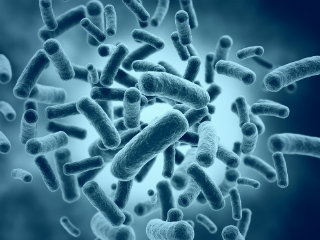 For today’s edition of Dear Mark, I’m answering three questions from a single reader who just read an article from Vice. The article makes pretty bold assertions about topics that have already received a good deal of attention here on the blog. First, are probiotics actually useless? A new study cited in the article seems to suggest so. Next, is your gluten-free diet killing you? That’s what the author of the Vice article says. And finally, have GMO foods been conclusively proven to be safe and indistinguishable from non-GMO foods? Is the debate, more or less, conclusively over?
For today’s edition of Dear Mark, I’m answering three questions from a single reader who just read an article from Vice. The article makes pretty bold assertions about topics that have already received a good deal of attention here on the blog. First, are probiotics actually useless? A new study cited in the article seems to suggest so. Next, is your gluten-free diet killing you? That’s what the author of the Vice article says. And finally, have GMO foods been conclusively proven to be safe and indistinguishable from non-GMO foods? Is the debate, more or less, conclusively over?
Let’s discuss:
Mark,
What are we to make of this article on Vice? It’s claiming that probiotics don’t do anything, gluten-free diets are potentially dangerous for people without celiac, and GMO foods have no downsides. Is it true?
http://motherboard.vice.com/read/prob...
Thanks,
Skip
The studies the article bases its arguments on are real, but the results aren’t as definitive or far-reaching as the Vice writer implies. Let’s take a look at each in turn.
“Probiotics are useless.”
That’s what the Vice writer said.
The paper was rather narrow, actually. Its goal was to assess the effect of probiotic supplementation on fecal microbiota composition in healthy subjects. That’s it. In the authors’ own words, “RCTs of solely probiotic supplementation and placebo in healthy adults that examined alteration in composition of overall fecal microbiota structure assessed by shotgun metagenomic sequencing, 16S ribosomal RNA sequencing, or phylogenetic microarray methods were included.” They ended up with 7 eligible trials.
It wasn’t assessing the health effects of probiotics. It assessed whether or not healthy people taking probiotics can expect alterations to the bacteria living in their guts.
Probiotics do lots of other things, not always by altering the composition of the resident gut bacteria.
They can improve IBS symptoms and other GI issues. They can help the lactose intolerant tolerate it. They can improve rheumatoid arthritis symptoms and reduce the incidence of upper respiratory tract infections. They can increase gut barrier stability.
This study wasn’t about those other things, though. It was about healthy adults without any health conditions, particularly ones that probiotics have been shown to help. All the other hundreds of probiotics trials are useless or flawed. It just means that they didn’t satisfy their specific and narrow requirements for consideration.
If you’re healthy, with no digestive complaints, no immune problems, then probiotics won’t change your gut composition. That’s all this study says.
This actually makes me feel good about using and selling probiotics. It suggests to me that in healthy folks, probiotics don’t try to fix what isn’t broken. They don’t “assert” themselves on an otherwise intact and healthy gut. But in unhealthy people with conditions probiotics can help, they do alter the gut in a positive way. Probiotics are “smart.” As living things, perhaps they can fix what needs fixing and ignore what doesn’t.
The next claim was “gluten-free diets are dangerous.”
The Vice writer oversteps yet again. The actual paper in the Journal of Pediatrics was fairer and more balanced, suggesting that gluten-free diets as commonly practiced increased the risk of nutrient deficiencies. I agree with this.
For many people, wheat is the “best” source of many nutrients because it’s a huge part of their diet. Then they go gluten-free and remove wheat from their diet only to replace it with more nutrient-poor grains. They’re not eating any healthier; they’re actually just swapping out wheat for other refined grains. Gluten-free foods typically use nutrient-poor starches and flours. Whereas whole wheat is perfect for making baked goods by itself, gluten-free bakers must cobble together tons of isolated, refined flours, gums, and starches to approximate the original product. This removes gluten, sure, but it also removes a lot of nutrients. Whole wheat bread is more nutritious than rice flour bread. Wheat pancakes contain more micronutrients than tapioca starch pancakes. The former examples are whole foods. The latter examples are isolated, nutrient-poor starches.
What if you went “gluten-free” by replacing your grains with meat, vegetables, fruits, and tubers? I swear there’s a name for that…
“GMOs are safe.”
I’ve never taken a hard-line stance against GMO foods. I’m not particularly concerned with the act of gene insertion so much as what’s being inserted and what those insertions allow us to do. Many of you have given me a lot of flack for that nuanced position.
The study cited in the article discusses GMO-related reductions in “insecticide poisoning,” an acute condition affecting farm laborers who handle and come into direct contact with pesticides. The increase in GMOs engineered to produce their own endogenous insecticides has reduced the use of exogenous insecticides. Workers are applying and handling fewer insecticides, which presumably drives down cases of insecticide poisoning. This is a logical and positive development.
However, a 2012 study found that GMOs have led to a net increase in pesticide usage (herbicides and insecticides combined), primarily thanks to Roundup-Ready crops. A more recent paper found that insecticide use went down but herbicide use went up, again thanks to Roundup-ready crops incentivizing and encouraging Roundup use. More Roundup (an herbicide) is being applied than ever.
Is Roundup safe? Pro-industry skeptics always point to the relative safety of glyphosate, the active ingredient in Roundup. But surfactants, adjuvants, and other “inactive” ingredients make Roundup 25 times more toxic than plain old glyphosate. I’m not comfortable with it, personally.
So, to sum up, the Vice article doesn’t give the whole story. It’s a quick summary that probably took under an hour to write, but it’s very misleading.
What do you think, folks?
Like This Blog Post? Subscribe to the Mark's Daily Apple Newsletter and Get 10 eBooks and More Delivered to Your Inbox for FREE



May 29, 2016
Weekend Link Love – Edition 402
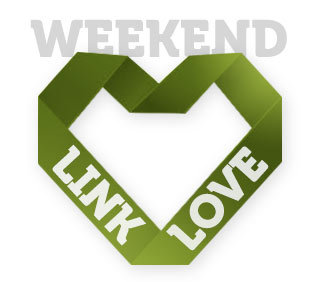 Today’s your last chance to get 10% off all PRIMAL KITCHEN™ products on PrimalBlueprint.com. Just pop coupon code “PALEOFX” in your cart before checkout.
Today’s your last chance to get 10% off all PRIMAL KITCHEN™ products on PrimalBlueprint.com. Just pop coupon code “PALEOFX” in your cart before checkout.
Research of the Week
Infant helplessness predicts species intelligence.
A low-FODMAP diet helps IBS patients.
Many ancient Romans had really bad knees.
Dark roasts have more bioactive coffee compounds than light roasts.
Is this why cats and dogs can “go vegan”?
In most people, lowering salt intake increases the risk of heart disease. It only sorta works in people with hypertension who already eat lots of salt.
New Primal Blueprint Podcasts

Episode 121: CJ Hunt: Host Elle Russ hangs out with CJ Hunt, writer, producer, and host of The Perfect Human Diet. Ever wonder what could drive a man to look for the perfect human diet? Are you curious about how the guy who created the first paleo documentary eats and lives? Then listen to today’s episode.
Each week, select Mark’s Daily Apple blog posts are prepared as Primal Blueprint Podcasts. Need to catch up on reading, but don’t have the time? Prefer to listen to articles while on the go? Check out the new blog post podcasts below, and subscribe to the Primal Blueprint Podcast here so you never miss an episode.
6 Reasons to Look Forward to Growing Old
Interesting Blog Posts
How to use your brain’s delete key.
Basketball runs in the family. Football and baseball, not so much.
In urban farming, the food’s not really the point.
The biological importance of saturated fats.
Media, Schmedia
Hawaii may give tax credits to organic farmers.
Hawaii’s local foods are often invasive species.
The Economist calls for action on antibiotic resistance.
Everything Else
Eh, that’s a decent plank.
176,000 years ago (at least), Neanderthals were building rock structures deep inside caves.
What’s it like to be a goat.
Americans: fatter than ever.
If you’re going to highlight the importance of vitamin K2, you might want to use a picture of food that contains it.
Laird Hamilton’s 10-point plan to live forever.
If it’s successful, a vegan billboard aiming to reduce diabetes by getting people to stop eating eggs will actually increase it.
Recipe Corner
Keep a jar of chimichurri sauce around to add to pretty much anything.
Chris Kresser’s grain- and guilt-free pancake recipe.
Time Capsule
One year ago (June 1 – June 7)
7 Old Wives’ Tales That Aren’t Utter Nonsense – Folk wisdom isn’t always wrong.
The Myth of Perfect Conditions: 9 Common Excuses Used to Delay Exercise – Common excuses and how to defeat them.
Comment of the Week
https://pbs.twimg.com/media/CjGkV70UgAEI_xT.jpg:large
– This kid has a bright future.




May 28, 2016
Roasted Eggplant Stuffed with Lamb
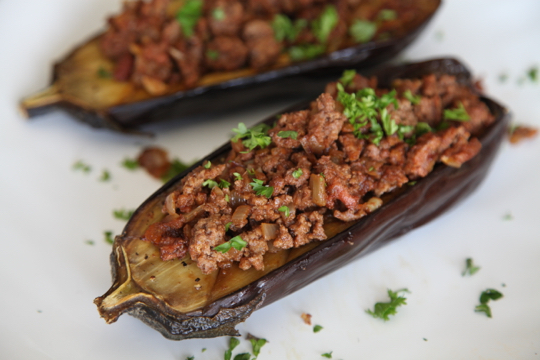 An edible serving dish made of roasted eggplant halves stuffed with cinnamon and paprika scented lamb. How does that sound for dinner tonight? The eggplant is roasted until the texture is creamy enough to eat with a spoon. The ground lamb is cooked with onion, garlic and aromatic spices. Combined, the eggplant and lamb turn into a meal that is the definition of simple, healthy and delicious.
An edible serving dish made of roasted eggplant halves stuffed with cinnamon and paprika scented lamb. How does that sound for dinner tonight? The eggplant is roasted until the texture is creamy enough to eat with a spoon. The ground lamb is cooked with onion, garlic and aromatic spices. Combined, the eggplant and lamb turn into a meal that is the definition of simple, healthy and delicious.
Can you substitute ground beef, pork or even turkey in this recipe? Certainly. But don’t forget about what lamb has to offer: All eight essential amino acids, several B vitamins, niacin, zinc, iron and lots of conjugated linoleic acid. As with all meat, grass-fed is ideal. Although lamb is more likely to be grass-fed than beef, much depends on where the lamb is raised. Before stocking up on ingredients for this recipe, read this guide for figuring out whether or not lamb is grass-fed. (And check out the tips below for buying perfect eggplant.)
Servings: 4
Time in the Kitchen: 1 hour
Ingredients:
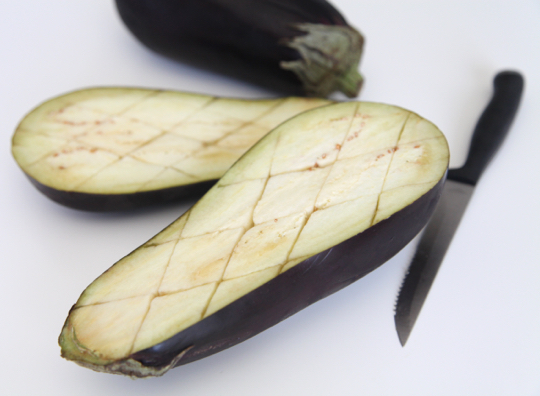
2 eggplants, halved lengthwise
2 tablespoons coconut oil or extra virgin olive oil, plus more to brush eggplant (30 ml)
1 onion, finely chopped
2 cloves garlic, finely chopped
2 teaspoons tomato paste (10 ml)
1 pound ground lamb (450 g)
1/2 teaspoon ground cumin (2.5 ml)
2 teaspoons sweet paprika (10 ml)
1/4 teaspoon ground cinnamon (a pinch)
1/4 cup finely chopped cilantro (or parsley) (60 ml)
How to Pick Perfect Eggplant:
To avoid bitterness, choosing a good eggplant at the market is more important than pre-salting and rinsing the eggplant. Look for smooth and shiny skin and a firm, but not rock-hard, texture. The stem should have a nice green color, and the area around the stem should also be firm, not mushy. The larger and older an eggplant is, the more likely it will be bitter and seedy. Choose medium-sized eggplants and ideally purchase from a farmer’s market where the eggplants are likely to be young and freshly picked.
Instructions:
Preheat oven to 400 °F/204 °C.
Score the flesh of the eggplant with the tip of a knife in a crosshatch pattern, cutting not quite down to the skin. To make a crosshatch pattern, tilt the top of the eggplant to the right. Cut diagonal lines about an inch apart. Tilt the top of the eggplant to the left. Cut diagonal lines over the first lines so you have a diamond pattern.
Brush the eggplant flesh with a generous amount of coconut oil or olive oil. Season with salt and pepper.
Place the eggplant halves, flesh side down, in a roasting pan (lined with parchment for easier cleanup).
Roast 35 to 45 minutes until the skin is collapsing. Remove from the oven. The flesh should be very soft.
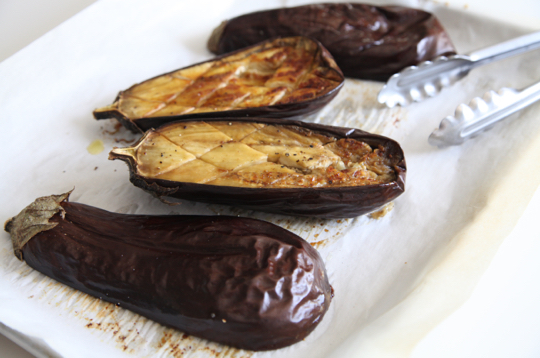
While the eggplant is cooking, heat 2 tablespoons coconut oil/olive oil in a large skillet over medium heat. Add the onion, cooking until soft, 8 minutes.
Add the garlic, then tomato paste. Stir, and cook another 2 to 3 minutes.
Raise the heat to medium-high. Add the ground lamb. Season the meat with salt, plus the cumin, paprika, and cinnamon. Break the meat up into small pieces as it cooks. When the meat is cooked, mix in the cilantro.
Spoon the ground lamb on top of the roasted eggplants. Serve.
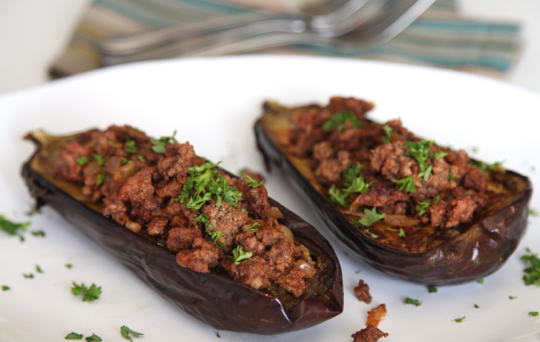




May 27, 2016
100 Pounds Lost, Type II Diabetes Gone, and High Blood Pressure Normalized After Going Primal
It’s Friday, everyone! And that means another Primal Blueprint Real Life Story from a Mark’s Daily Apple reader. If you have your own success story and would like to share it with me and the Mark’s Daily Apple community please contact me here. I’ll continue to publish these each Friday as long as they keep coming in. Thank you for reading!
 I have been intending to submit my success story for the last few years, and I now realize why I was waiting. Even though I have lived Primally for the last 4.5 years I only decided to become a Primal Blueprint Health Coach and start a Primal wellness business in the last several months.
I have been intending to submit my success story for the last few years, and I now realize why I was waiting. Even though I have lived Primally for the last 4.5 years I only decided to become a Primal Blueprint Health Coach and start a Primal wellness business in the last several months.
A chiropractor told me about Mark’s Daily Apple in August of 2010. I signed up immediately for the ‘weekly’ email, which turned out to be daily. I loved that pace of information flow. After 14 months of reading all I could from Mark’s Daily Apple, and independent researching, I finally believed those postings to have merit. The success stories carried the most weight, as I could see how others benefited from going Primal. The stories of others who were similar weight and had similar health issues were the most compelling to me. I thought people who lost 180 lbs in 1.5 years, or 65 lbs in a year, had to starve and work out for hours several days a week. Boy oh boy, do I know otherwise now!
I had lower back surgery in 2004 and had to wait six months laying on the floor until my surgery date. Typical of the “free” universal “health care” system in Canada. I gained 60 lbs in six months, because eating made me feel better. I ate a LOT of crappy food in that six months. After surgery, pain levels were greatly reduced, but I still had 30% – 70% of my muscles not receiving nerve signals properly. I took a sedentary job and gained five lbs a year until I was 309 lbs on October 21 2011. The date my tipping point finally tilted and I became Primal. I was 50 years old.
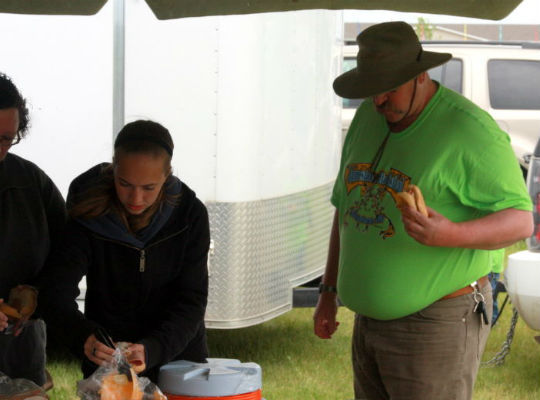
A few years prior to that date I had been going to my family doctor because of my rapidly declining health, and worsening of blood sugar and blood pressure. I was an untreated type II diabetic with A1C being at least 8.6 for about 1.5 years. Being told that I must start taking Metformin for type II diabetes, and that I would eventually transition to taking insulin by needle, was my ’tipping point.’ I had noted higher blood sugar spikes after whole wheat bread, or seven grain hot cereal, and less severe spikes after a dozen perogies and a few cabbage rolls. A typical Saturday breakfast would be a triple portion of seven grain cereal covered with 3/16” of Demerara brown sugar and I would still be hungry, even though I consumed a ton of calories. I would follow that up with half a large bag of ripple potato chips and be somewhat less hungry, but still not satiated. Wolfing down a couple of sandwiches 90 minutes later would keep me going until supper. I now realize that my body stayed hungry until sufficient nutrients were provided, not calories!
A (not so) quick rundown on my health changes. I was keeping track of my blood sugar two to five times a day when I made the Primal transition. Type II Diabetes was gone in three days. I also eliminated acid reflux, gouty arthritis, obstructive sleep apnea, seasonal allergies, plantar fasciitis, carpal tunnel, nerve cluster on knee, skin tags, and mood issues. Blood pressure before was 145/110 and dropped after one month, and again at month eight. Now blood pressure is typically around 108/66. I used to get sick three to four times per year, ear infections, sinus infections. I have not been sick since going Primal. Used to take four prescription medications, now zero. My chronic leg pain was mitigated by going primal and I was able to drop the prescription for that condition. Blood vessel cluster on ‘bad’ right ankle is 98% better in appearance. Not as attractive to mosquitoes and don’t sunburn nearly as easily. Fingernails grow faster and don’t split/flake. Long beard does not get split ends. Dry (elbows) and oily (forehead) skin resolved. Ability to handle stressful situations has become amazing! Recall from memory greatly improved. I used to have one or two cavities every year or so but haven’t had a single cavity in 4.5 years. Also had recalcification of two teeth that were flagged as a concern the year before going Primal. No teeth concerns now. One thing that I did not expect was dreaming! I went from six ‘blockbuster’ dreams a year to now having five a week. Could someone please come up with a way to record these dreams for later playback. I can’t believe how creative my dreams are!

With my daughter on the Edgewalk at the CN Tower in Toronto July 2012. This is eight months after going primal.
Remember that I have significant permanent nerve damage to my right leg, so exercise was not an option. Without any exercise I still lost 99.5 lbs. in year one. Weight loss stalled a few times in year one and I found that if I ate MORE, that the weight loss resumed. I came up with a chocolate bark recipe (unsweetened chocolate, unsweetened coconut, almond butter and maple syrup) that is loaded with saturated fat and calories, but I lost more weight by consuming a slab of it every week. I also found that eating more garlic, onions, mushrooms and blueberries would speed up my weight loss.
People always say that being overweight causes health problems. There is a correlation here but certainly not a causality. My body stopped losing fat three weeks before year one concluded. My body determined that this is my quiescent point. Insurance companies still consider me fat because their charts say I should weigh closer to 170 lbs. The fact that I went from 44” waist pants with a huge belly hanging over to 36” pants with a tiny belly doesn’t matter to them. Going from 2XL shirts to L shirts doesn’t matter to them. Going from 54T suits to 48T suits doesn’t matter to them. They don’t take skeletal frame type into account.
Eating Primally, as expected, my LDL cholesterol was flagged as being high (outside normal range). My HDL numbers also increased so my ratio is still fine. My triglycerides are not a concern. I have told my insurer about testing for LDL particulate size, but they don’t believe in that at all. I did not inform my family doctor of my Primal change. I saw him four months after the switch and my A1C was 5.0. I had lost 50 lbs at that point. He asked what was improving my health, and, despite being a vegetarian, he urged me to continue my lifestyle change. At my annual physicals my A1C continues to be 5.0. My doctor said that he was involved in cholesterol studies a few decades ago and 73 types of cholesterol were identified. He said that researchers don’t have any idea what types are good/bad nor what levels are optimal. He knows about the LDL particulate size science, and is not concerned with my results.
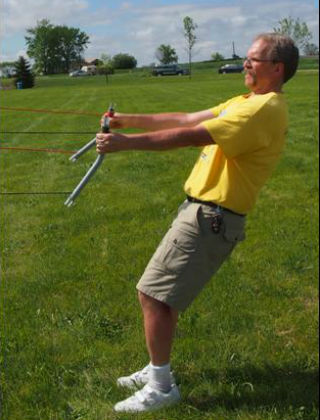 After year one I was able to start exercising a bit and now walk (barefoot) on my treadmill while watching Discovery channel programs. I also do some pushups and side/front/back planking, but lower back pain limits how much I can do. Flying my large kites is a good ‘play’ workout and doesn’t feel like a workout at all. After having all those endorphins released all day long from this fun kite flying activity (and not feeling much pain), I certainly pay for it that evening. I don’t use any medication to help this and usually am back to normal after a nights rest.
After year one I was able to start exercising a bit and now walk (barefoot) on my treadmill while watching Discovery channel programs. I also do some pushups and side/front/back planking, but lower back pain limits how much I can do. Flying my large kites is a good ‘play’ workout and doesn’t feel like a workout at all. After having all those endorphins released all day long from this fun kite flying activity (and not feeling much pain), I certainly pay for it that evening. I don’t use any medication to help this and usually am back to normal after a nights rest.
I did not realize until a few months ago that becoming a Primal Blueprint Health Coach and starting my own business (at age 55), was going to be my future. I am committed to educating other people to take the reins of their health and show their friends, relatives and co-workers how you don’t have to depend on the ‘health care’ system to survive. You can THRIVE on your own, just by living a Primal lifestyle.
I have now been living Primally for 4.5 years and have never had the urge to go back. You do need a ‘tipping point’ to switch to being Primal and even have a reason to continue being Primal. It is amazing to be able to go a day without eating and not get distracted by hunger, because my body knows how to burn body fat for calories. I usually have two meals a day, but I LOVE TO EAT and it is that, and not hunger, that brings me to the table. I followed recipes for the first few years of being Primal, but now have become quite the improvisational cook and have come up with some amazing (and some not so amazing) meals. Kabocha squash has become my favourite vegetable. Roasted on a pan that has been wiped down with lard and then a sprinkle of sea salt when done. I am quite sure that my ancestors from the United Kingdom did not have the pleasure of this vegetable. A typical plate is 2/3 assorted vegetables and 1/3 meat. High fat plain yogurt with blueberries and maple syrup is a favourite snack.
After learning about the gut biome and then the mouth biome, I have been doing some experimenting with brushing my teeth with water only for the last 5 months. I went for a routine dental cleaning 4 months after starting this experiment and they said I had no more buildup than I used to have pre-primal.
What has surprised me is the hostility of family members when I try to nudge them into a direction where they can better their health. You would think that my example would be powerful enough. My wife, 18 year old daughter, and 23 year old son have a host of health issues, and two of them are taking prescription medications. Arthritis, thyroid, lymph issues, migraines, gall bladder issues, depression, mood and gut issues aren’t enough of a tipping point for them. Luckily, my 20 year old son is about 70% Primal and has no health concerns.
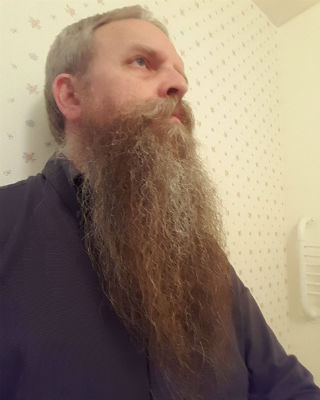 Here in Canada, health care is ‘free.’ We pay for it in our taxes but we don’t have any costs at the doctors/hospitals. Pharmaceuticals are usually covered by provincial plans or benefit packages at work. People don’t think drugs cost anything but they are a burden to our provincial governments and employers that fund these benefit packages. Because of these two situations it is hard to convince people to switch for financial reasons. They say that it will cost more for food and they will be spending more money by eating well. I have calculated that it does not cost any more money to eat well, but I do spend an hour or two every other day cooking up large meals that I can spread over the next several suppers/lunches. Cognitive dissonance is a constant, as I mostly eat conventionally raised meats and non-organic vegetables/fruits because I would otherwise get an earful about how much I spend on food. The focus should be on why SAD food is so cheap, not why REAL food is more expensive.
Here in Canada, health care is ‘free.’ We pay for it in our taxes but we don’t have any costs at the doctors/hospitals. Pharmaceuticals are usually covered by provincial plans or benefit packages at work. People don’t think drugs cost anything but they are a burden to our provincial governments and employers that fund these benefit packages. Because of these two situations it is hard to convince people to switch for financial reasons. They say that it will cost more for food and they will be spending more money by eating well. I have calculated that it does not cost any more money to eat well, but I do spend an hour or two every other day cooking up large meals that I can spread over the next several suppers/lunches. Cognitive dissonance is a constant, as I mostly eat conventionally raised meats and non-organic vegetables/fruits because I would otherwise get an earful about how much I spend on food. The focus should be on why SAD food is so cheap, not why REAL food is more expensive.
It was only a few months ago that it dawned on me that my mothers maiden name, Spearman (spear-man), aligned with grok throwing a spear. Coincidental? Yep, but makes me chuckle.
I never had a bucket list until reaching age 50. I decided to grow my first significant beard.
Here is a picture of my beard at two years along. Not sure how Grok that is, but it certainly makes me less forgettable.
In great health,
Tom
Like This Blog Post? Subscribe to the Mark's Daily Apple Newsletter and Get 10 eBooks and More Delivered to Your Inbox for FREE



May 26, 2016
Humility: A Primal Virtue with Modern Value
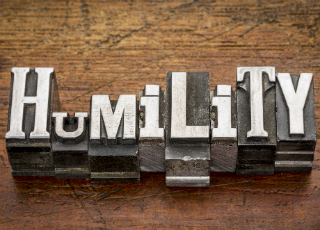 I’ve gotten a lot of feedback about my leadership post earlier this year—particularly from people who connected with the humility aspect. It’s a characteristic I think most people would agree is in short supply these days, but most of us still admire it when we see it. In truth, little in our culture today encourages a humble disposition, and I think that’s a relatively new development. More than ever it seems to be the loudest, boldest, and (often) most obnoxious voices that garner our attention. Brashness somewhere along the line became an asset rather than an irritation. We’re told we need to do more, be more, have more, “fight” for what what we presumably deserve, and push our way to the front if we want our good in life. Put yourself out there, talk yourself up, and—above all—look out for number one. Is anyone else exhausted by these instructions? The key (and related) question of the day, however, is this: what would Grok have said about this social shift?
I’ve gotten a lot of feedback about my leadership post earlier this year—particularly from people who connected with the humility aspect. It’s a characteristic I think most people would agree is in short supply these days, but most of us still admire it when we see it. In truth, little in our culture today encourages a humble disposition, and I think that’s a relatively new development. More than ever it seems to be the loudest, boldest, and (often) most obnoxious voices that garner our attention. Brashness somewhere along the line became an asset rather than an irritation. We’re told we need to do more, be more, have more, “fight” for what what we presumably deserve, and push our way to the front if we want our good in life. Put yourself out there, talk yourself up, and—above all—look out for number one. Is anyone else exhausted by these instructions? The key (and related) question of the day, however, is this: what would Grok have said about this social shift?
First off, I think it’s safe to say he would’ve voted anyone exemplifying said traits off the island, as would have the majority his contemporaries—for very good reason. A band full of overgrown egos would’ve spelled disaster for survival in his day. In the “immediate” economies of hunter-gatherer life (“simple” hunter-gatherers who relied on no food storage in particular), daily cooperation was a must. Everyone upheld their duties to the band, and the group’s good was the organizing principle of each and every day. There simply wasn’t room for entitlement.
In keeping, band cohesion relied on every member’s adherence to the social codes that were passed on through story and ritual. These codes of collaboration and reverence weren’t just rules to be followed to avoid conflict or ostracism (a situation with significant, if not deadly, consequences in those days). Band codes were a spiritual as well as social ethos. Members participated in this ethical and spiritual tradition, and by doing so saw themselves as co-creators of it across the generations. This contribution was a key and honored aspect of their own individuation. Their individual identity was, in part, constructed and fulfilled through the personal upholding of the age-old codes.
In other words, our ancestors defined themselves by more than their bundle of desires, moods, and affinities. They viewed themselves as actors in and stewards of something bigger than themselves. While they enjoyed freedom to move in and out of bands as season or whim dictated, who they were was always, in part, how they lived through the communal codes, the story of their individual and collective humanity, wherever they happened to be settled at the time. Warding off conflict, self-centered action, and power struggles offered the group the focus and cohesion needed for optimum chance of survival.
As I mentioned a few weeks ago, a near universal element in hunter-gatherer ethos was horizontal “egalitarian” leadership. Just as members each upheld the social contract of collaboration, so they all contributed to decisions related to the group. If more focused leadership was required, group consensus—often over an extended period of consideration—determined the selection. Humility was a key merit in this choice. A humble person was a person who wouldn’t be enamored by a taste of “power” and one who would be less likely to overstep the bounds of his/her influence. A humble person was one who could be trusted to serve the welfare of the group. Blowhards and browbeaters needn’t apply.
When cohesion was maintained, the band was safer and more prosperous. Everyone had what they needed based on participation rather than entitlement or power. Problems were more likely resolved peacefully and without lingering resentments that would carry over and disrupt ongoing collaboration. Likewise, balance between human need and natural environment was upheld in a conscious, reverent way. Their respect for the society and natural world around them kept them alive and thriving.
If we accept the virtue of humility for Grok’s time, there’s still the question of how its value transfers to our own age. What does humility mean to the human story as it continues today?
First off, I think we commonly misunderstand humility, seeing it as a low opinion of one’s self rather than what I’d suggest it is: situating one’s self-concept within the steadying perspective of a broader backdrop.
We’ve all met people who believe themselves to be the end-all. Their self-absorption and self-aggrandizement come with plenty of liabilities. Not only are they not fun to be around, but their lack of a larger perspective discourages them from imagining larger impacts of their decisions and prevents them from objectively assessing their own motivations or capacities. How is this an asset?
The core value of humility is, as it was for our primal ancestors, to place ourselves—our abilities, our desires, our purpose—against the larger contexts that exists. This doesn’t need to be a religious or even cosmological issue. To put it simply, it means moving through life and relationships and business valuing ourselves but deciding to see our place and choices through a broader lens and opting not to place ourselves higher than others.
Many people assume this entails limiting the expression of their talents in a false modesty. Others just as unfortunately believe they should think of others’ needs but not their own. Still as wrong, some believe they shouldn’t try to make a mark with what they have to offer.
I think there are substantial differences at work here. You can—and should—offer your potential to the world because that’s actualization. No one in Grok’s day imposed a guilt trip to the best hunter in the band; however, that hunter saw his role for what it was within the group and within the stories of his ancestors. He was part of a larger picture, and it offered perspective. Living your purpose doesn’t equate to indulging in pomposity.
Rather than seeing our particular skills or smarts as justification for authority, we do better to view them as tools. This is what I have to work with in life. It will help me make a good living for myself and my family. It gives me a way to contribute to the greater community, however I define that for myself.
Likewise, people living from humility will position their purpose within a greater circle of reflections and feedback. They’ll be open to other opinions and methods. They’ll be able to work more cooperatively. They’ll be less attached to their own power and more focused on the process. As a result, guess what? They’ll be more successful in their endeavors. They’ll have a more fulfilling family life. They’ll enjoy greater rapport with their colleagues and clients. They’ll have access to others’ insights and perspectives, which they’ll be able to understand are resources they can apply for their own and others’ benefit.
Humble people will be more trustworthy and thereby attract (and retain the cooperation of) others, who want to partner or collaborate for mutual advantage. One study, for example, emphasized the abilities to admit mistakes, to acknowledge others’ strengths and to teach others as solid predictors of people’s success and that of the organizations they worked for. Another study demonstrated that managers who were humble inspired more commitment and receptivity from their employees. I would humbly suggest the same goes for personal relationships.
Finally, when we cultivate humility, we don’t get lost in the entitlement lie that tells us we don’t need to work for what we want. In Grok’s day, before the rise of hierarchy, that wouldn’t have flown. Today we do just as well to understand none of us is above doing the work that needs to be done—whether it’s within our families, professions or communities. Showing up and taking part with a healthy dose of humility not only fosters our own sense of self-discipline, but it opens the door to the benefits of communal belonging and endeavor—what we’re all wired to appreciate. Never underestimate the timeless power of tribe and purpose—in Grok’s day or our own.
Thanks for reading, everyone. I’d love to hear your thoughts on humility and what it means to you. Share your comments, and enjoy the rest of your week.




May 25, 2016
8 Essential Tips for Primal Men
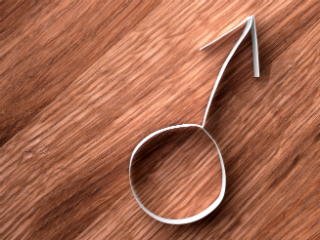 Men I know. I am one, after all. Have been for many years. For the most part, I enjoy it. It’s worked out really well for me. I don’t find it particularly difficult to be a man. Once I dialed in the basics of this Primal stuff, my health improved and my fitness became more well-rounded and applicable to the things I enjoyed doing. I haven’t struggled much. But many people do. And while the majority of Primal advice is geared toward humans in general, I’ll just get this out of the way early: These “men’s tips” all apply to many women, too. And many of the “women’s tips” from last week’s post also apply to men. But ignoring the gender-specificity of general trends serves no one. Everyone has the capacity for competitiveness; men tend to have more. Both genders can benefit from fasting, but women are more likely to have negative responses. Men and women both need sleep; lack of it hits women harder. That’s all. As always, if you recognize yourself in these tips, go for it!
Men I know. I am one, after all. Have been for many years. For the most part, I enjoy it. It’s worked out really well for me. I don’t find it particularly difficult to be a man. Once I dialed in the basics of this Primal stuff, my health improved and my fitness became more well-rounded and applicable to the things I enjoyed doing. I haven’t struggled much. But many people do. And while the majority of Primal advice is geared toward humans in general, I’ll just get this out of the way early: These “men’s tips” all apply to many women, too. And many of the “women’s tips” from last week’s post also apply to men. But ignoring the gender-specificity of general trends serves no one. Everyone has the capacity for competitiveness; men tend to have more. Both genders can benefit from fasting, but women are more likely to have negative responses. Men and women both need sleep; lack of it hits women harder. That’s all. As always, if you recognize yourself in these tips, go for it!
1. Skip a meal every now and then
As you recall from the women’s tips post, women have a lower tolerance for meal skipping. Men have a better chance of thriving on it. I suspect they should try. A good rubric is “eat as infrequently as you can without negative effects.” If you can eat twice a day without getting irritable, experiencing metabolic slowdown or fat gain, or feeling stressed, eat twice a day. The longer you can go in between meals, the better you’ll get at burning fat and, I’d predict, the longer you’ll live.
Don’t graze. Eat meals (not every one).
2. Mind your iron
Excess iron is inflammatory and a potential oxidant, and male bodies have no system for shedding it. If we want to limit iron, we either have to bleed, destroy our red blood cells with lots of exercise, or reduce our absorption of it. Studies indicate that a modest reduction of iron is a smart health strategy for most men who want to live long and well and enjoy better insulin sensitivity.
Intense exercise reduces iron stores.
Dietary polyphenols in colorful fruits and vegetables, tea, coffee, and red wine all reduce iron absorption. Pretty much any of those healthy “superfoods” we hear about have iron-chelating properties. I’m talking about curcumin (from turmeric), quercetin (from apples, onions, and many other plant foods), grapes—the colorful spices and herbs and plants.
Dairy, especially its calcium, may reduce iron absorption.
Giving blood reduces iron (hey, maybe bloodletting worked!). Shoot for a 40-60 range, as drops in insulin sensitivity have been seen at slightly higher levels.
Don’t get crazy about it, now. You still need iron. Be sure to get a full blood count to confirm you actually need to do anything. But keep it in mind, especially as you age.
3. Lift your iron
Everyone—man, woman, teen, seniors—needs to lift heavy things, if only for health and fitness reasons. But there’s also another component: aesthetics. The “ideal” male physiques (and there are many) depend heavily on strength training. You don’t have to be a bodybuilder or squat heavy or even use weights at all. You do have to manipulate weight in the face of gravity on a regular basis, though, even if it’s your own.
Being and looking strong helps you make your way through life, get out of sticky situations, boosts confidence, and makes you better at everything.
4. Inject intermittent intensity
Whether it’s running sprints once or twice a week, going really hard in the weight room, climbing a tree until your heart pounds against your breastplate, going bouldering, approaching the beautiful woman, starting that business you’ve always dreamed about, surfing a big wave, or practicing holding your breath underwater, there are real benefits to punctuating your comfortable life with intermittent bouts of physical, mental, and psychological intensity. Even though most of us no longer have to practice these behaviors for sustenance and survival, learning a martial art or hunting may also be worthy pursuits that inject intensity.
Put something on the line. Get a little scared. Get uncomfortable.
5. Mind your testosterone
Testosterone is perhaps the primary determinant of a man’s sexual function, muscle protein synthesis, physical strength, bone health, psychological health, cognitive function, energy level, confidence, and risk of getting diabetes. In short, every male should strive to optimize their testosterone levels if they care at all about quality of life. How?
Eat adequate amounts of saturated fat, monounsaturated fat, and cholesterol. We use fat and cholesterol to make sex hormones, so a deficiency in either can depress testosterone levels.
Lift heavy things. The resultant increase in T doesn’t seem to change the effect of the training, but the benefits persist into other areas of our lives.
Get some sun exposure every day. Be smart about it, though. Avoid burning. Frequent bouts of low volume sunning are better than infrequent bouts of heavy sun. Failing that, take vitamin D.
Get lots of sleep. Optimize your sleep hygiene.
Eat zinc, found in red meat and oysters. It’s one of the building blocks of testosterone.
Lose weight, as excess body fat can depress testosterone and losing weight restores it.
Don’t eat too little. Excessive calorie restriction can be as bad as excess body fat.
That’s the low hanging fruit.
6. Compete, but not too much
Most men have a competitive streak. This is mostly due to biology; while the hormone oxytocin promotes altruism and cooperation in women, it promotes competitiveness in men. Don’t suppress this. Suppressing innate characteristics rarely works. Embrace it. Steer it.
This may mean joining an adult sports league or being the guy to take initiative and set up a recurring pickup game of something each weekend with your friends. It may mean standing up for yourself at work, asking for that raise, or starting your own business.
Balance your competitive streak with appreciation for the fruits of your drive. Win the game, but enjoy playing it. Make the money, then use it to improve the quality of your daily existence and those you care about.
7. Embrace your body (type)
It’s usually women receiving this message, but it’s also important for men. Maybe more so since they don’t receive the message much. Well, here it is:
Not everyone has the capacity to pack on 30 pounds of muscle. For some people, it’s a real struggle just to keep weight on. That’s me. While I can maintain a fairly good physique with decent muscle mass, I remember pushing myself about six years ago to pack on even more muscle. I did, but I had to eat more than I was comfortable eating and train more than I wanted. In the end, I hurt my shoulder bench pressing too much, was sidelined for a few weeks, and lost most of my gains.
Not everyone can get to Men’s Health model levels of leanness and vascularity. Heck, even those models are rarely walking around like that year round. If it’s not your job, you don’t need to kill yourself, depress your testosterone, and ruin your libido trying to maintain sub 10% levels of body fat.
This doesn’t mean you give up trying to improve your body composition. Keep strength training and sprinting. Keep moving. Keep eating right. You can still get stronger, faster, fitter, and leaner. You will improve, and that’s good enough.
8. Learn from morning wood
Waking up with morning wood is a decent barometer for testosterone function, sexual health, and overall robustness. You’re quite literally raring to go.
If you used to get it but don’t anymore, something’s up. Frequency of morning erections is a reliable measure of andropause, the male version of menopause characterized by a reduction in free testosterone.
If you never used to have it but get it every morning, you’re doing things right. You’re getting good sleep, your sex hormones are functioning, you’re recovering from your workouts, you’re eating well. In men, virility and health go hand in hand (similar to fertility corresponding to health in women).
I’ll just say this again so you don’t mistake me: if you’re a woman and you feel driven to compete, or you absolutely love intensity in your life, do it. These tips are more likely to be critical for the average man, but they potentially apply to anyone.
Thanks for reading, everyone. Now, I’d love to hear from you.
What other tips do you suggest for men? Lemme know and I may throw another post together.
Like This Blog Post? Subscribe to the Mark's Daily Apple Newsletter and Get 10 eBooks and More Delivered to Your Inbox for FREE



Mark Sisson's Blog
- Mark Sisson's profile
- 199 followers



